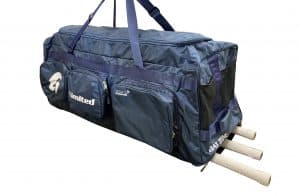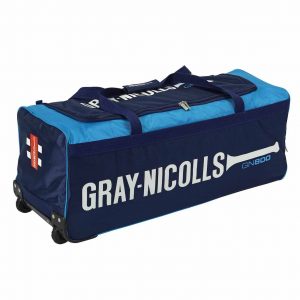Choosing the right bat can be confusing. There are so many different options available to the consumer these days that it’s almost impossible to know what is the best. It’s hard to get a realistic review on a cricket bat as many manufacturers descriptions make each bat sound like a magic wand. Reality is, bats are unique bits of wood, even the same make and model can vary greatly so it’s impossible to put an accurate description on every bat. These descriptions are broad and to be honest often irrelevant.
Getting numerous bats in your hands and picking the one that feels best to you is a great way to choose a bat. For some people due to time and location this just isn’t possible. Online purchase of cricket bats has become more and more common over the last few years. When done the correct way, getting something that best suits you can be achieved. That’s where it becomes important to have someone who know’s everything about bats choosing for you.
In this article I’ll try pass on as much information as possible that i’ve learnt over the last 20 years of selling cricket bats.
Getting the right size.
For juniors this can be tricky. I’m often asked what size bat someone of a certain age should be using. While age can give a guide it’s the height that is the most important factor. The size guides we have on the website give a good indication of what size to get but how long will the bat last? Truth be told it’s impossible to know as you can only guess how much a child will grow over a certain period of time. At Meulemans our aim is for a junior to get two years out of his/her cricket bat. This usually means going one size up from what is on the guide, the bat may be slightly big for the initial few months and just getting on the small side by the end of the second season. Obviously this is an educated guess and taking into consideration ‘normal’ growth of the child.
For senior cricketers the most common size used is Short Handle (SH). I’d recommend this size for the majority of adults and taller juniors. As a guide from about 172cm right up to 186cm would be best suited to this size. The other options are Short Blade and Long Blade. More recently some brands have been selling bats with a shorter blade and longer handle where the overall size is the same as a short handle. Players like Joe Root, Travis Head and Matthew Wade use these. It’s a personal preference. For me personally i’m not tall around 178cm but I feel more comfortable with the normal SH size. Around the 186 – 187cm mark is where players tend to gravitate towards the Long Blade bats. One thing to consider is long blade bats understandably are slightly heavier. Playing cross bat shots (Cuts and Pulls) can also take a bit of getting used to with the extra length in the blade.
What Weight is right?
Bats are most commonly weighed in pounds and ounces. Getting the right weight of bat is a personal thing. Different weights can suit different. A big and strong person might prefer a light bat and a lightly framed player might prefer a heavy bat. It’s a personal choice. One thing is a fact though bats have become heavier over the last 10 to 15 years. The most common weight for a senior bat we sell in store is between 2lb 8oz and 2lb 9oz. These days most of the international players are using around the 2lb 9oz to 2lb 10oz. For taller juniors who are tall enough for a senior bat but don’t yet have the strength of an adult I usually suggest around 2lb 7oz or 2lb 8oz.
So what are the advantages of going heavy or light. Generally speaking the heavier the bat means the more wood in the bat and the better the ball is likely to rebound. This means you don’t have to swing as hard to get value for your shots. Players can play with a shorter more compact back lift and still get value for shots. It can be an advantage on the drive but a disadvantage on the cut and pull shots where bat speed is important. The lighter the bat the more bat speed you can generate, so the ball might not come off the bat might as well as a heavy one but the extra bat speed can make up for that. A lighter bat also makes it easier to adjust shots, an advantage on wickets where the ball might be seaming or have variable bounce. This is why in my opinion a bat around 2lb 8oz or 2lb 9oz is best suited to the majority.
Grades of willow and grains
I often get asked what grade of willow a certain bat is and what is the difference. Generally speaking the better the grain is on a bat the higher the grade of willow it is. Higher grades have less blemishes like butterfly marks and Red Wood on the edges and a straighter more even distribution of grains. Grade one will usually have 7 plus grains across. Bats are graded at an individuals discretion s what might be a desirable grain to me might be a shocker to someone else. For this reason bats can often be graded above or below where they should be. One thing to consider is just because a bat has a better grain than the one next to it it doesn’t always mean it’s going to play better. Having said this a one average a better grade of bat will usually play better than the next grade down and will almost always look better.
Shape of the bat and sweet spot
Common questions I get is where is the sweet spot on this bat? Does it have a high, mid or low profile? What profile would best suit me?
Generally speaking a mid profile is the best option. A bat with a lower profile usually has a slightly lower middle. This is commonly thought to suit someone who likes to drive the ball. A bat with a higher middle better suited to someone who likes to play cross bat shots. Is this true? Yes and no. The majority of international players use a bat with a mid to high profile. Where you hit the ball on the bat is a combination of technique and conditions. For example a common mistake in amateurs is to drive with a stiff front leg, meaning they don’t transfer their weight far enough forward so they will tend to hit the ball low on the bat. Does this mean they should buy a bat with a low middle or learn to bend their front knee. If it was me I would learnt bend the front knee.
Another thing to bear in mind is a bat with a low profile will pick up heavier than one with a high profile due to where the distribution on weight is.
Rebound
Testing bats for rebound can be done in a few different ways. Some people like to test with a bat mallet. I was taught from a very young age how to test a bats ‘middle’ by bouncing a ball on the bat. In fact the very same ball has been used for over 30 years. Justin Langer once accidentally took it home in his pocket, when he got home to City Beach he had to turn around and drive back to South Perth to drop it back.
I often get asked when testing a bat what i’m looking for. It’s often a combination of feel, sound as well as how far the ball is actually rebounding off the bat. It’s not just testing the very middle though it’s testing higher and lower on the blade and even more toward the edges to see how the bat performs all over. Some bats have a lot larger sweet spot than others and are therefor more forgiving to shots off centre.
Hopefully this helps you in the process in selecting the right bat for you. If you any further questions don’t hesitate to email me at scott@meulemans.servicelauncher.dev
Scott Meuleman



